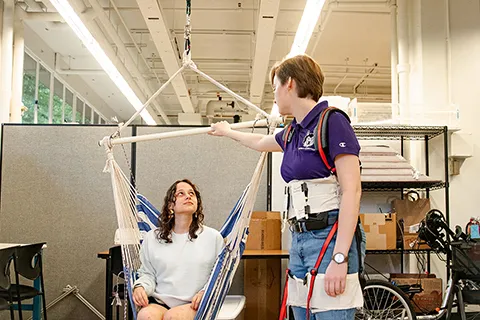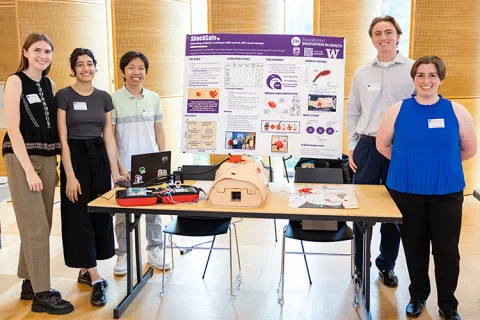Jefferson County Department of Emergency Management
Microgrids for Community Resiliency on the Olympic Peninsula
Poor electricity reliability and slow restoration of power is an everyday issue for residents of the Olympic Peninsula, but FEMA suggests that the civilian response time for a significant regional event (e.g., major Cascadia fault earthquake) will be from 3 months to one year, with an expectation that the population be prepared for self-sufficiency during that period. The Jefferson County Department of Emergency Management is concerned about their reliance on fossil fuel back-up generators to support the department, sheriff, and 911 centers, and worked with a student team to explore the cost and capabilities of a renewable energy generation & storage microgrid for long duration power outages. This student team worked to build off of prior analysis staff at the Washington Clean Energy Testbeds have performed to support the microgrid Seattle City Light recently completed at the Miller Community Center and Snohomish County PUD recently built in Arlington. Microgrids are a growing area for engineering design. An advisory group helped guide the technical and community elements of all three microgrid projects on the Olympic Peninsula. Desired outcomes this student team worked towards including a final engineering report that: (1) Describes the context for the study, including a statement of the resiliency goals and metrics based on DEM staff input, and the data sources available for estimating the electrical loads, solar and wind energy potential of the site, and other environmental factors (site hazards, fuel availability, etc.) (2) Applies DEM priorities and engineering principles to determine microgrid infrastructure needs and costs to support the highest priority loads under several discrete operational scenarios, for example, outages occurring in summer vs winter, and for islanded operation of days, weeks, or months (following a catastrophic disaster). (3) Detailed technoeconomic analysis of the base case design, including engineering drawing, component lists and pricing estimates, with performance of the design evaluated using real-time digital simulation.
Faculty Adviser
Payman Arabshahi,
Associate Professor, UW ECE,
Electrical & Computer Engineering
Students
David Schulman
Q Thai Tran
Rahul Prashanth Gubbala
Samuel Luong
Related News

Fri, 09/20/2024 | UW Civil & Environmental Engineering
Smarter irrigation for a greener UW
A new project combines satellite data with ground sensors to conserve water and create a more sustainable campus environment.

Mon, 09/09/2024 | UW Mechanical Engineering
Testing an in-home mobility system
Through innovative capstone projects, engineering students worked with community members on an adaptable mobility system.

Mon, 08/19/2024 | UW Mechanical Engineering
Students strive to ensure accurate AED shock dosage
ShockSafe, developed by students with the help of mentors from Philips and Engineering Innovation in Health (EIH), can distinguish between children and adults during cardiac arrest emergencies.

Wed, 08/07/2024 | Snohomish County News
Snohomish County, University of Washington partnership boosts efficiency in enterprise scanning center
UW Industrial and Systems Engineering Capstone Project set to save Snohomish County over $40,000 annually.